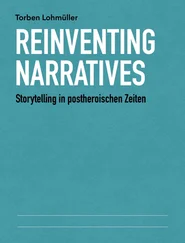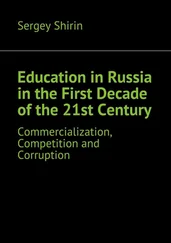This book invites us, as proposed in Chapter 11, to relate the imperative of accessibility and, correlatively, the promotion of an inclusive school to the system of signs and symbols that make up its grammar. Respecting this grammar establishes the social possibilities that define “accessibility” or, conversely, “inaccessibility” and conditions the performative effect of the semantics of accessibility. This performative effect resides in the articulation of three notions generally used to qualify the accessibility imperative (access, accessible and accessibilization) to distinguish between what comes under the redefinition of the economy of obligations, what is part of the reorganization of the social contract linking societies to their members, and the rationalities presiding over the advent of new forms of normativity. This distinction associates the notion of access to to forms of social visibility made possible by access to a place, to learning, that is the patterns of belonging that individuals derive from it. It consequently relates the accessible to the social legibility of practices and to the resulting forms of commitment to the common good that individuals impose on themselves because of the accessibility of school and social environments. Such accessibility is inseparable from the accessibilization strategies developed by stakeholders to institutionally, organizationally, functionally and socially legitimize the principles claimed by the accessibility imperative. In other words, if access to requires accessible school environments, the latter derives from the accessibilization of school environments through the creation of a symbolic and practical framework that allows the legitimization and, thereby, the operationalization of the principles claimed by the accessibility imperative.
Amadieu, F. and Tricot, A. (2014). Apprendre avec le numérique . Retz, Paris.
Barrère, A. (2017). Au cœur des malaises enseignants . Armand Colin, Paris.
Boltanski, L. and Chiapello, A. (2000). Le nouvel esprit du capitalisme . Gallimard, Paris.
Castel, R. (1995). Les métamorphoses de la question sociale . Fayard, Paris.
Champeaux, F., Dos Santos, R., Herrero, S. (2019). Première évaluation des acquis des élèves en situation de handicap. Information note no. 19-01, DEPP, Paris.
Crahay, M. and Dutrevis, M. (2010). Psychologie des apprentissages scolaires . De Boeck, Brussels.
Dehaene, J.F. (2018). Apprendre! Les talents du cerveau, le défi des machines . Odile Jacob, Paris.
Ebersold, S. (2010). Idéologie de la réussite, réinvention des institutions et reconfiguration du handicap. Alter , European Journal of Disability Research/Revue Européenne de Recherche sur le Handicap , 4(4), 318–328.
Ebersold, S. (2017a). L’éducation inclusive. Privilège ou droit ? PUG, Grenoble.
Ebersold, S. (2017b). L’École inclusive, face à l’impératif d’accessibilité. Éducation et sociétés , 2(40), 89–103.
Ebersold, S. (2019). Évaluation des besoins, importunité scolaire et réinvention de l’inéducable. La nouvelle revue – éducation et société inclusives , 2(86), 65–78.
Ebersold, S., Schmitt, M.J., Priestley, M. (2011). Inclusive education for young disabled people in Europe: Trends, issues and challenges. Report, ANED, Brussels.
Edyburn, D.L. (2015). Accessible Instructional Design , Advances in Special Education Technology , Emerald Group Publishing Limited, London.
Ehrenberg, A. (1995). L’individu incertain . Hachette, Paris.
Ehrenberg, A. (2013). De l’homme coupable à l’homme capable. In Ruptures , Frydman, G., Flies-Trèves, M. (eds). PUF, Paris.
European Agency for Development in Special Needs Education (2013). Organisation of provision to support inclusive education – Literature review. Report, European Agency for Development in Special Needs Education, Odense.
European Agency for Special Needs and Inclusive Education (2018). European Agency statistics on inclusive education: 2016 dataset cross-country report. Report, European Agency for Special Needs and Inclusive Education, Odense.
European Agency for Special Needs and Inclusive Education (2019). Changing role of specialist provision in supporting inclusive education: Mapping specialist provision approaches in European countries. Report, European Agency for Special Needs and Inclusive Education, Odense.
Genard, J.L. (1999). La grammaire de la responsabilité . Le Cerf, Paris.
Muratet, M., Le Coz, K., Louis, N., Colineau, J., Ebersold, S. (2013). EyeSchool : un dispositif d’aide à la scolarisation . EIAH 2013 , 23–30.
NESSE (2012). Education and disability/special needs. Policies and practices in education, training and employment for students with disabilities and special educational needs in the EU. Report, European Commission, Brussels.
OECD (1999). Inclusion at Work . OECD, Paris.
OECD (2007). Special Needs Education. Indicators and Statistics . OECD, Paris.
OECD (2012). Equity and Quality in Education. Supporting Disadvantaged Students and Schools . OECD, Paris.
OECD (2014). Talis 2013 Results: An International Perspective on Teaching and Learning . OECD, Paris.
OECD (2019). Talis 2018 Results: Teachers and School Leaders as Lifelong Learners . OECD, Paris.
Rose, D. and Meyer, A. (2002). Teaching Every Student in the Digital Age: Universal Design for Learning . ASCD, Alexandria.
UNESCO (1997). Classification internationale de l’éducation . UNESCO, Paris.
Zay, D. (2012). L’éducation inclusive. Une réponse à l’échec scolaire? L’Harmattan, Paris.
1 1 These projects are funded by the U.S. Department of Education’s Office of Special Education Programs (OSEP) to optimize schooling conditions for children and youth with disabilities as provided for in the Individuals with Disabilities Education Act (IDEA).
2 2 This fund provides financial support for projects aimed at improving teaching and learning practices, institutional reforms and lifelong learning.
PART 1 Accessibility as a Societal Imperative
1
The Accessibility Imperative: Outlines and Implications
Serge EBERSOLD
Lise, Conservatoire national des arts et mètiers (CNAM), Paris, France
From a necessity related to the schooling of students with disabilities, the issue of accessibility has become an imperative, that is, a moral imperative, commanding the school system to be inclusive. This imperative enjoins the school to prevent all forms of exclusion by opening up to all students without distinction on the basis of origin, social background or health condition. It asks the school to place the student at the center of its concerns in order to be as close as possible to his or her rhythms, needs and expectations (Cartron 2013; Plaisance 2013, 2014; European Agency for Special Needs and Inclusive Education 2015). This transformation of accessibility into an imperative invites us not to be satisfied with the usual discursive uses of the term “accessibility” that are induced by the conditions of institutionalization of the field of disability (Ebersold 1997; Larrouy 2006). Following Durkheim, it reminds us that the organization of education systems is consubstantial with the representations that societies make of their cohesion and their adaptation to new conditions (Durkheim 2012).
As a result, the transformation of accessibility into an imperative invites us to associate it with an “official social image” (Castoriadis 1975), that is, with a mode of self-representation of society through which it asserts itself and its norms and values, and legitimizes ways of educating and, more generally, ways of making society. Indeed, the imperative of accessibility is consubstantial with a transformation of school culture. Countering the prejudice that there are a priori limits to the exercise of rights based on individual profiles, it reverses the normative frame of reference underlying school functioning by placing the causes of learning difficulties and, more generally, social difficulties on the shortcomings of school systems before inferring them from the characteristics of individuals: the universal design for learning seeks to compensate for the inabilities and failings of schools and not those of students (Rose and Meyer 2002). In doing so, the imperative of accessibility aims to transform the way in which educational diversity is viewed: it encourages education systems to see it as a resource and to make themselves inclusive by taking into account the variety of contexts and cognitive profiles (Büchel et al . 1995; Paour 1995; Hart et al . 2004; CNIRE 2017).
Читать дальше










